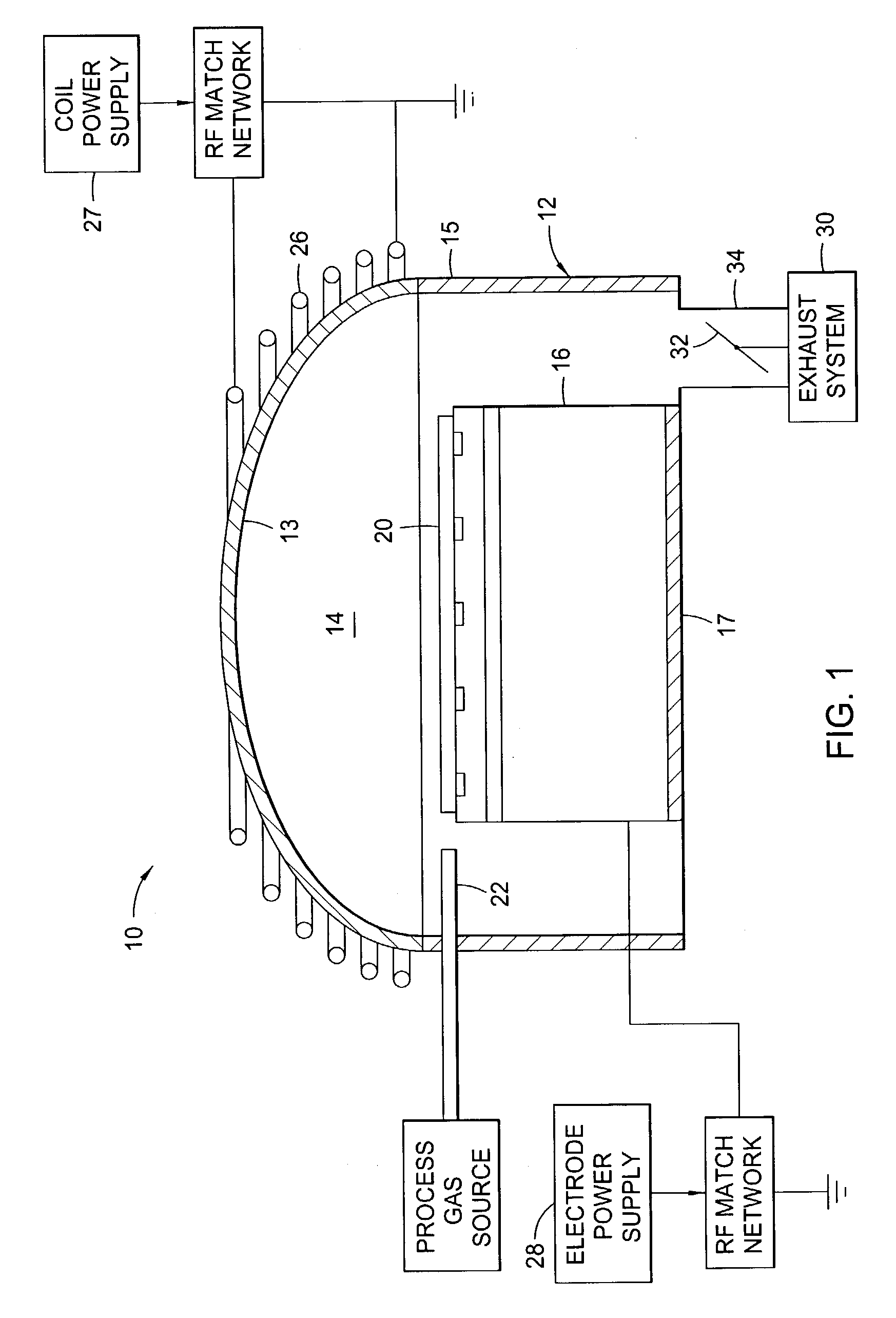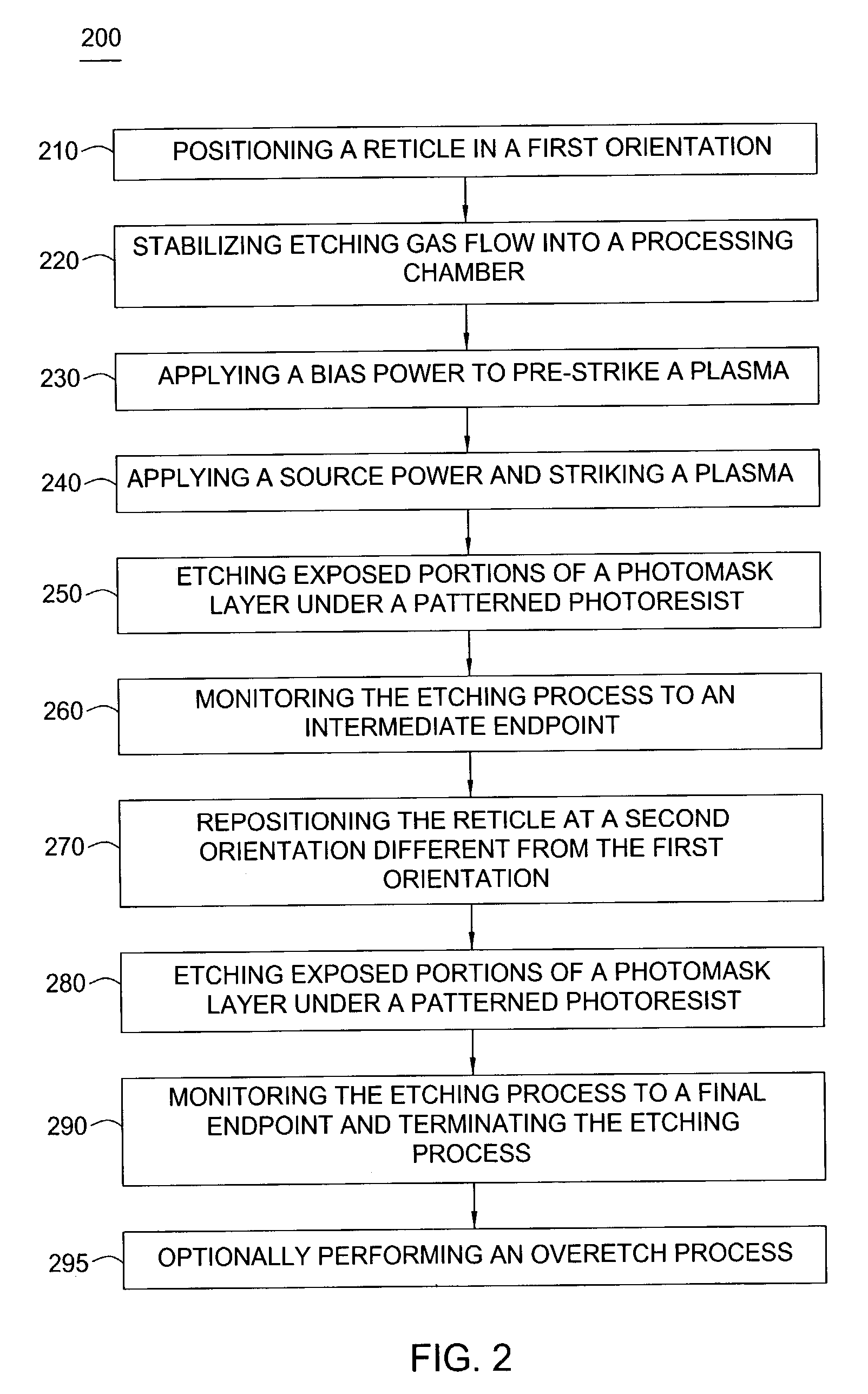Methods for substrate orientation
a substrate orientation and substrate technology, applied in the direction of photomechanical equipment, instruments, originals for photomechanical treatment, etc., can solve the problems of loss of critical dimensions of features, undercut phenomenon of metal layer below the patterned resist, and less than desirable patterning of the photomask in subsequent photolithographic processes
- Summary
- Abstract
- Description
- Claims
- Application Information
AI Technical Summary
Problems solved by technology
Method used
Image
Examples
Embodiment Construction
[0022] Aspects of the invention will be described below in reference to an inductively coupled plasma etch chamber. Suitable inductively coupled plasma etch chambers include the Tetra.TM. photomask etch chambers available from ETEC of Hayward, Calif., or optionally, the Decoupled Plasma Source (DPS.TM.) chamber available from Applied Materials, Inc., of Santa Clara, Calif. Other process chambers may be used to perform the processes of the invention, including, for example, capacitively coupled parallel plate chambers and magnetically enhanced ion etch chambers as well as inductively coupled plasma etch chambers of different designs. Although the processes are advantageously performed with the ETEC Tetra.TM. photomask etch chamber, the description in conjunction with the DPS.TM. processing chamber is illustrative, and should not be construed or interpreted to limit the scope of aspects of the invention.
[0023] FIG. 1 is a schematic cross-sectional view of one embodiment of a processin...
PUM
| Property | Measurement | Unit |
|---|---|---|
| power | aaaaa | aaaaa |
| power | aaaaa | aaaaa |
| bias power | aaaaa | aaaaa |
Abstract
Description
Claims
Application Information
 Login to View More
Login to View More - R&D
- Intellectual Property
- Life Sciences
- Materials
- Tech Scout
- Unparalleled Data Quality
- Higher Quality Content
- 60% Fewer Hallucinations
Browse by: Latest US Patents, China's latest patents, Technical Efficacy Thesaurus, Application Domain, Technology Topic, Popular Technical Reports.
© 2025 PatSnap. All rights reserved.Legal|Privacy policy|Modern Slavery Act Transparency Statement|Sitemap|About US| Contact US: help@patsnap.com



